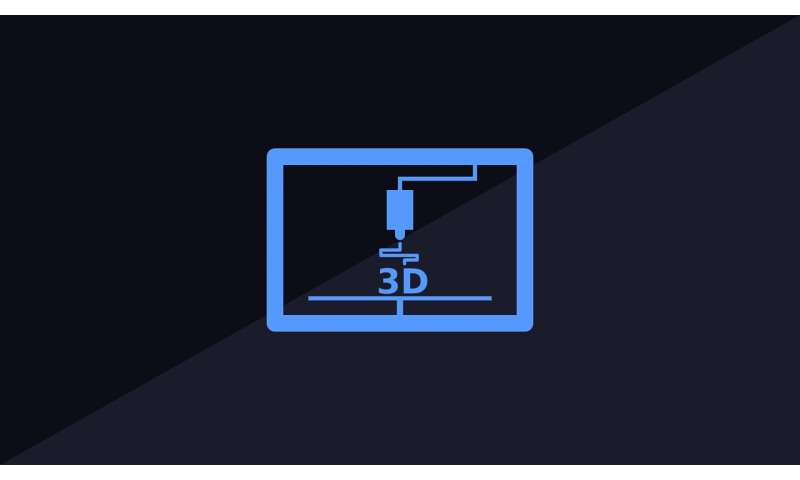Introducing chemical substances into 3D-printed objects

Prof. Robert Przekop's team from the Center for Advanced Technologies at AMU has created an invention allowing chemical substances to be introduced into objects printed on 3D printers. The solution may find use both in science and the economy. The joint-stock company Sygnis has purchased the license for its use.
The tool developed by the AMU researchers is simple but, as it turned out, not noticeable—it involves the direct placement of a container of liquid in the path of a wire, which is melted and printed.
One possible use of the invention is the personalization of pharmaceutical production. Medicinal substances can be printed directly on a 3D printer in a soluble polymer carrier. The researchers have already performed the first successful tests with an antibiotic.
"So far, to carry out extrusion tests of pharmaceutical substances in polymers, you had to have an entire pharmaceutical-standard line consisting of big tools adequately prepared and cleaned. Now we can print objects directly on the printer from a significantly small amount of the active substance," explains the scientist.
The innovation is also suitable for agricultural use to personalize the dosage of pesticides and fertilizers. Such substances can be placed in the soil, in a polymer matrix printed on a 3D printer, from which they will be gradually released. A further implementation is the creation of three-dimensional objects with an isotopic source. "Our concept can be used in a wide range of disciplines," state the researchers.
According to Alicja Ostrowska-Leszczynska, director of the University's Center for Innovation and Technology Transfer at the Adam Mickiewicz University, the tool opens up possibilities for simple testing of a wide range of chemical compounds added to polymeric materials. "It allows rapid screening, which does not require costly apparatus and adaptation of laboratory facilities, to test various polymer-modifier systems for their compatibility and new application uses without the need for complex modifications, redesign or reconstruction of the print head."
Provided by Adam Mickiewicz University